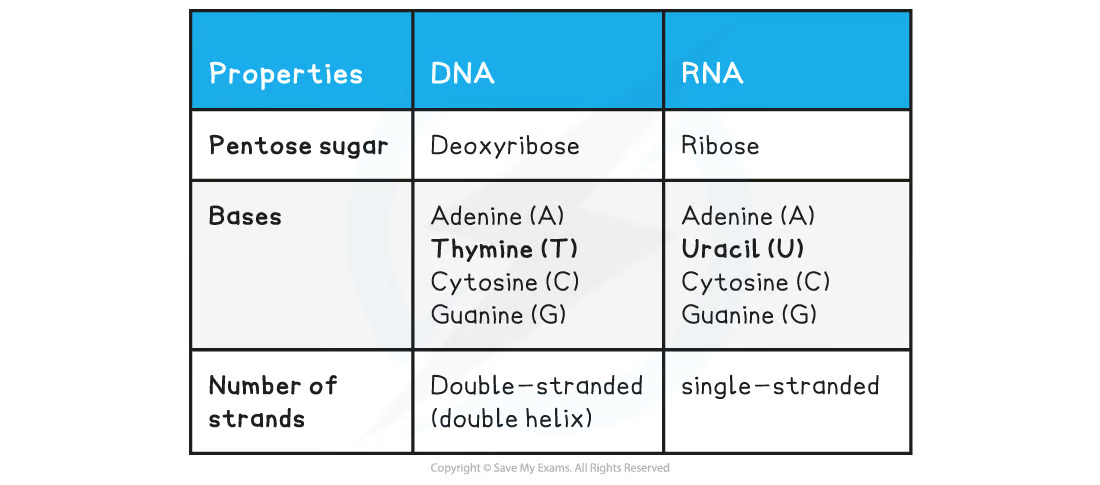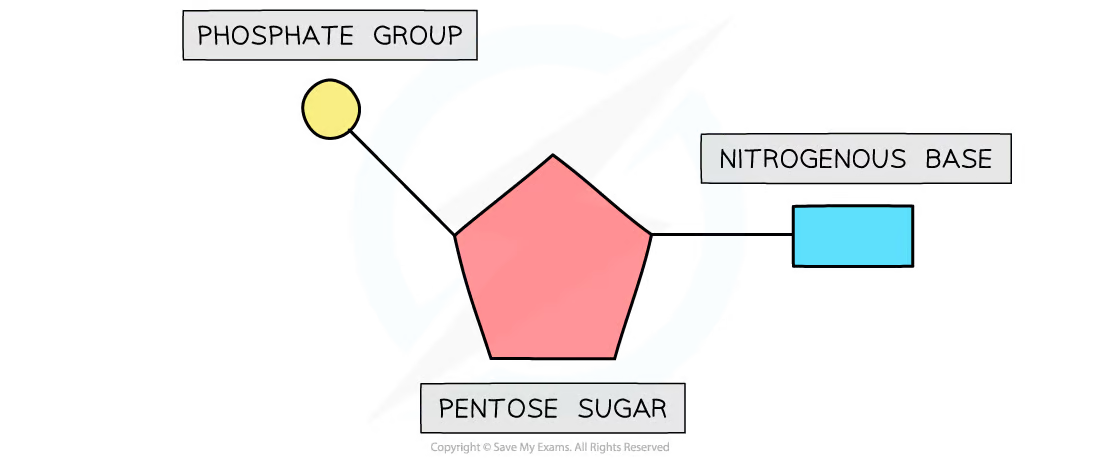Nucleotides & Purines and Pyrimidines
0.0(0)
0.0(0)
Card Sorting
1/6
Study Analytics
Name | Mastery | Learn | Test | Matching | Spaced |
|---|
No study sessions yet.
7 Terms
1
New cards
What are nucleotides?
The subunits that make up DNA and RNA are known as nucleotides.
2
New cards

What is the structure of nucleotides?
Nucleotides are made up of three components:
o A nitrogen-containing base (also known as a nitrogenous base)
o A pentose sugar (containing 5 carbon atoms)
o A phosphate group
o A nitrogen-containing base (also known as a nitrogenous base)
o A pentose sugar (containing 5 carbon atoms)
o A phosphate group

3
New cards
What does phosphorylation mean?
Phosphorylation involves the addition of a phosphate group to an organic compound.
4
New cards
What is ATP?
It is a phosphorylated molecule.
One phosphate group = adenosine monophosphate (AMP) . Two phosphate groups = adenosine diphosphate (ADP) . Three phosphate groups = adenosine triphosphate (ATP).
One phosphate group = adenosine monophosphate (AMP) . Two phosphate groups = adenosine diphosphate (ADP) . Three phosphate groups = adenosine triphosphate (ATP).
5
New cards
What are purines and pyrimidines?
The nitrogenous base molecules that are found in the nucleotides of DNA (A, T, C, G) and RNA (A, U, C, G) occur in two structural forms: purines and pyrimidines.
6
New cards
What are the bases found in purines?
Adenine and guanine. Purines have a double ring structure.
7
New cards
What are the bases found in pyrimidines?
Cytosine, thymine and uracil. Pyrimidines have a single ring structure.